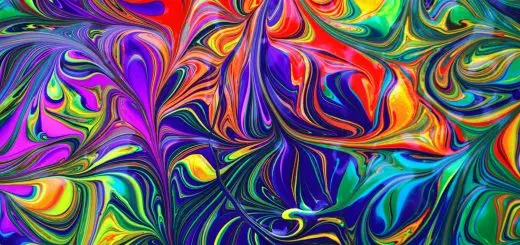Taoist Ritual Objects: Symbols of Spiritual Practice

Looking for more amazing products? Check out our online store and explore our collection here! Happy shopping!
Before diving in, please note: This post is for informational purposes only. If you’d like to know more about how we approach topics, feel free to check out our friendly Disclaimer Page.
Hey there, amazing readers! 
We’re committed to delivering quality posts, and your support (even just sticking around despite the ads) means everything to us. So, bear with us, and thanks for helping us keep the good vibes rolling. Now, on to the fun stuff!
TRANSLATE BUTTON AT THE END OF THE ARTICLE
Introduction: Understanding Taoist Ritual Objects
Taoism, an ancient Chinese philosophical and religious tradition, is rich in symbolism and ritual practices.
Taoist ritual objects play a significant role in the spiritual practices of Taoism, serving as tangible symbols of profound philosophical concepts and beliefs.
These objects are not merely ornamental but are imbued with deep spiritual meaning and significance.
They are used in ceremonies, rituals, and meditative practices to connect practitioners with the divine and the natural world.
Understanding Taoist ritual objects is essential for grasping the intricate tapestry of Taoist spiritual practice.
The Importance of Symbols in Taoism
Symbols hold great importance in Taoism, as they serve as bridges between the material and spiritual realms.
Taoist symbols are representations of complex philosophical ideas, cosmic principles, and spiritual truths.
They embody the balance of yin and yang, the harmony of the Five Elements, and the interconnectedness of all things.
In Taoist practice, symbols are used to focus the mind, cultivate inner awareness, and evoke spiritual energies.
They are tools for transformation and enlightenment, guiding practitioners on their spiritual journey towards harmony and unity with the Tao.
Origins of Taoist Ritual Objects
The origins of Taoist ritual objects can be traced back to ancient China, where Taoist priests and sages used various artifacts in their spiritual practices.
These objects were crafted with care and imbued with sacred symbolism, reflecting the teachings of Taoism.
Over the centuries, Taoist ritual objects evolved in form and function, adapting to the changing needs of practitioners.
Today, these objects continue to play a vital role in Taoist rituals, ceremonies, and meditation practices, preserving the rich heritage of Taoist spirituality.
Common Taoist Ritual Objects
Taoist ritual objects encompass a wide variety of artifacts, each with its own unique symbolism and purpose.
Some common Taoist ritual objects include:
Incense Burners: Used to burn incense as an offering to deities and ancestors.
Bell and Gong: Used to invoke spiritual energies and purify the ritual space.
Sword: Symbolizes authority and protection, often used in exorcism rituals.
Jade Disc: Represents the harmony of yin and yang, used in divination practices.
Lotus Flower: Symbolizes purity and enlightenment, often used in meditation.
These objects, among others, are essential tools in Taoist rituals, ceremonies, and meditative practices, guiding practitioners on their spiritual path.
The Role of Ritual Objects in Taoist Practice
Taoist ritual objects play a crucial role in connecting practitioners with the divine and cultivating spiritual awareness.
They serve as focal points for meditation, concentration, and energy cultivation.
By engaging with these objects in rituals and ceremonies, practitioners deepen their connection to the Tao and align themselves with the natural flow of the universe.
Ritual objects serve as reminders of the sacredness of life and the interconnectedness of all beings, guiding practitioners towards spiritual growth and enlightenment.
Symbolism and Meaning Behind Taoist Objects
Each Taoist ritual object is rich in symbolism and meaning, reflecting the profound philosophical teachings of Taoism.
For example, the sword symbolizes courage, strength, and the ability to cut through delusions.
The bell and gong represent the sound of the universe and the power of vibration to harmonize energies.
The jade disc embodies the cyclical nature of existence, reflecting the eternal rhythm of yin and yang.
Understanding the symbolism behind Taoist objects deepens practitioners’ spiritual practice and fosters a deeper connection to the divine.
How Taoist Ritual Objects are Used in Practice
Taoist ritual objects are used in a variety of ways in Taoist practice, from simple daily rituals to elaborate ceremonies.
Practitioners may use incense burners to purify their homes, bells and gongs to create a sacred space for meditation, or swords to ward off negative energies.
Each object is used with intention and reverence, invoking spiritual energies and blessings.
By incorporating these objects into their practice, practitioners deepen their connection to the Tao and align themselves with the natural order of the universe.
Sacred Objects in Taoist Temples
Taoist temples are adorned with an array of sacred objects, each imbued with spiritual significance and symbolism.
These objects include statues of deities, paintings of immortal beings, and ritual implements used in ceremonies.
The temple itself is considered a sacred object, representing the divine presence in the material world.
Practitioners visit temples to pay homage to the gods, seek blessings, and participate in rituals that connect them to the spiritual realm.
Sacred objects in Taoist temples serve as conduits for divine energy, fostering a sense of reverence and awe among practitioners.
The Influence of Taoist Ritual Objects on Daily Life
Taoist ritual objects have a profound influence on the daily lives of practitioners, guiding their actions and shaping their worldview.
By incorporating these objects into their daily rituals and practices, practitioners cultivate mindfulness, gratitude, and spiritual awareness.
For example, burning incense in the morning may serve as a reminder to start the day with intention and reverence.
Ringing a bell before meals may cultivate gratitude for the nourishment received.
By infusing daily life with sacred symbolism, practitioners deepen their connection to the divine and live in harmony with the Tao.
Preservation and Maintenance of Taoist Objects
The preservation and maintenance of Taoist ritual objects are essential to uphold their spiritual potency and significance.
Practitioners are encouraged to care for these objects with respect and reverence, ensuring they remain in pristine condition.
Regular cleaning, purification rituals, and offerings of incense help maintain the purity and energy of the objects.
By upholding the integrity of these objects, practitioners honor the teachings of Taoism and preserve the sacred heritage passed down through generations.
Contemporary Use of Taoist Ritual Objects
In contemporary times, Taoist ritual objects continue to play a significant role in the lives of practitioners around the world.
While the forms and practices may have evolved, the essence of these objects remains unchanged.
Modern Taoist practitioners use ritual objects to deepen their spiritual practice, connect with the divine, and cultivate inner harmony.
By embracing Taoist symbolism in their daily lives, practitioners find solace, guidance, and inspiration on their spiritual journey.
The timeless wisdom of Taoist ritual objects transcends cultural boundaries and speaks to the universal human experience of seeking meaning and purpose.
Conclusion: Embracing Taoist Symbolism in Spiritual Practice
Taoist ritual objects serve as powerful symbols of spiritual practice, guiding practitioners on their journey towards harmony, enlightenment, and unity with the Tao.
By understanding the significance and symbolism behind these objects, practitioners deepen their connection to the divine and cultivate spiritual awareness.
Incorporating Taoist ritual objects into daily life infuses each moment with sacred meaning, fostering a sense of reverence, gratitude, and mindfulness.
As practitioners navigate the complexities of the modern world, the timeless wisdom of Taoist ritual objects offers solace, guidance, and inspiration on the path towards spiritual growth and enlightenment.
Embracing Taoist symbolism in spiritual practice is not just a cultural tradition but a profound spiritual journey towards unity with the Tao.

The Enlightenment Journey is a remarkable collection of writings authored by a distinguished group of experts in the fields of spirituality, new age, and esoteric knowledge.
This anthology features a diverse assembly of well-experienced authors who bring their profound insights and credible perspectives to the forefront.
Each contributor possesses a wealth of knowledge and wisdom, making them authorities in their respective domains.
Together, they offer readers a transformative journey into the realms of spiritual growth, self-discovery, and esoteric enlightenment.
The Enlightenment Journey is a testament to the collective expertise of these luminaries, providing readers with a rich tapestry of ideas and information to illuminate their spiritual path.
Our Diverse Expertise
While our primary focus is on spirituality and esotericism, we are equally passionate about exploring a wide range of other topics and niches 

To ensure we provide the most accurate and valuable insights, we collaborate with trusted experts in their respective domains 
Our blog originally focused on spirituality and metaphysics, but we’ve since expanded to cover a wide range of niches. Don’t worry—we continue to publish a lot of articles on spirituality! Frequently visit our blog to explore our diverse content and stay tuned for more insightful reads.
Hey there, amazing reader! 
Check out our store here and take a peek at some of our featured products below! Thanks for being awesome!










